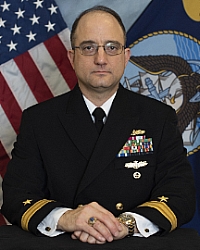
This week the Program Executive Officer (PEO) for unmanned and small combatants (USC) laid out its fiscal year 2021 priorities and plans as the fiscal year changeover began. Rear Adm. Casry Moton is personally focused and prioritizing six issues over the next fiscal year, he said during a Navy league virtual special topics breakfast webinar Sept. 30. They are divided into execution of Littoral Combat Ship (LCS) shipbuilding, field the LCS antisubmarine (ASW) mission package, complete operational testing of Mine…

 By
By 











